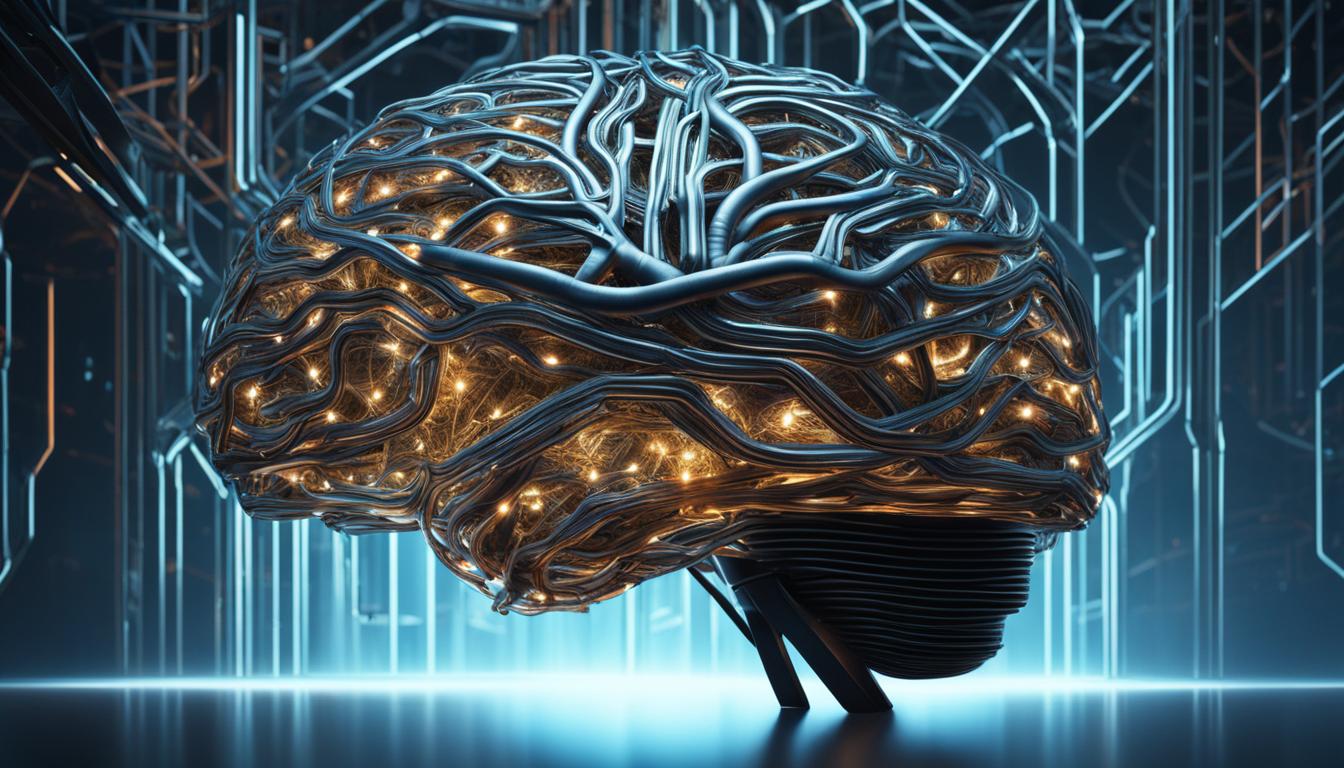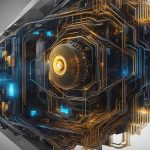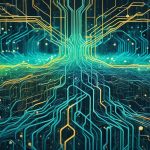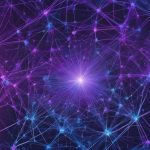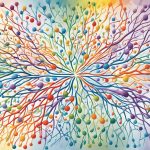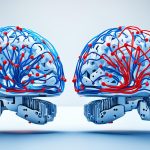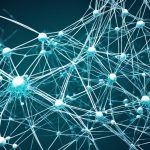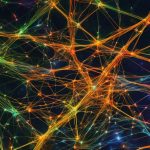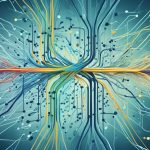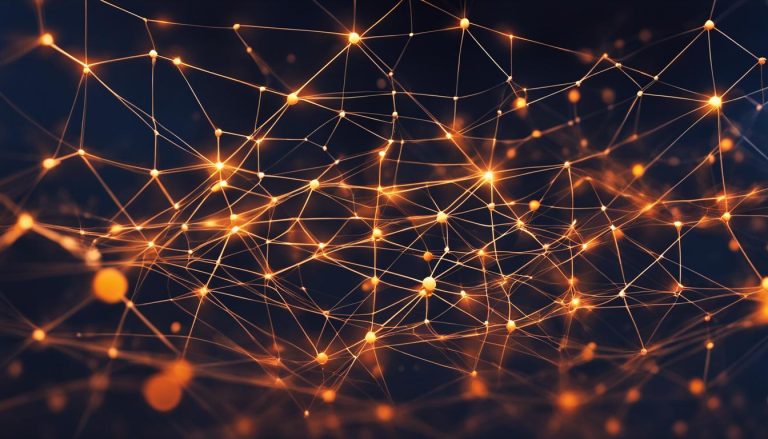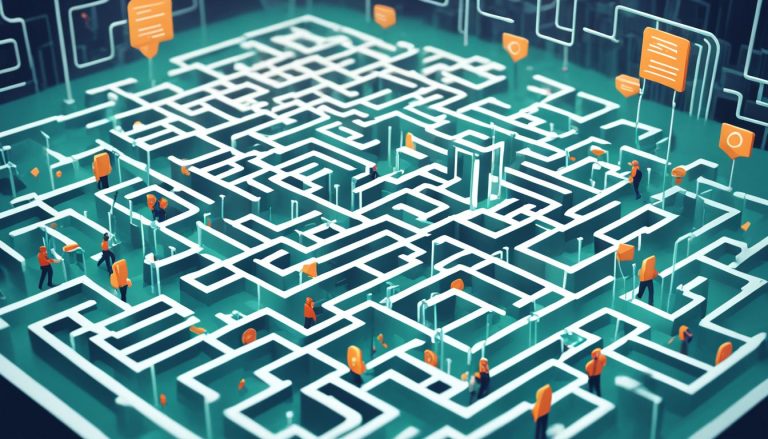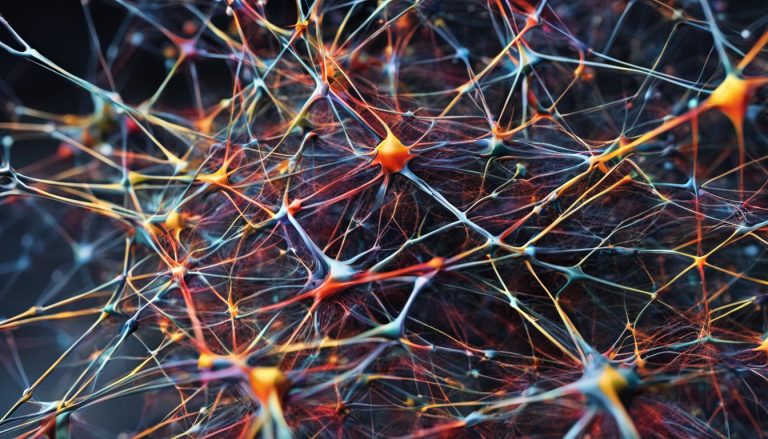Neural Turing Machines (NTMs) are revolutionizing the field of artificial intelligence by integrating AI with human-like memory processing capabilities. This integration is transforming the way we perceive AI, emphasizing the distinction between “information” and “knowledge.” NTMs act as advanced models that can adapt to novel problem types without additional training, expanding the capabilities of AI in processing and comprehension.
With the seamless blending of AI technologies into various applications, NTMs bridge the gap between AI and human memory. By leveraging external memory, NTMs enable AI systems to effectively retrieve information, generate knowledge, and solve complex problems. This integration of AI with human memory is revolutionizing the potential of artificial intelligence.
Stay tuned as we explore the nature of the human brain and how NTMs unlock its full potential. Discover how NTMs are reshaping education, business processes, and creative endeavors. Join us on this transformative journey at the intersection of AI and human memory processing.
The Nature of the Human Brain
The human brain is an intricate and highly advanced organ that plays a pivotal role in the processes of learning and cognition. It comprises several components, including the brainstem, cerebellum, cerebrum, and cerebral cortex. Each of these components serves distinct functions, with the cerebral cortex acting as the epicenter of high-level cognitive functioning.
The brain’s neural networks form the foundation of its cognitive capabilities. These networks enable the brain to process sensory information, facilitate voluntary movement, support cognitive skills such as memory and attention, enable language processing, and regulate emotions.
“The intricacies of the human brain provide valuable insights into developing AI technologies that mimic human-like memory processing.”
Understanding the complexities and workings of the human brain is essential when it comes to developing artificial intelligence technologies that aim to replicate human-like memory processing. By studying the intricate neural networks and cognitive functions of the brain, scientists and researchers can gain invaluable insights into creating AI systems capable of learning, adapting, and comprehending information in a manner similar to the human brain.
By studying the human brain, researchers can uncover new strategies for improving the memory and learning capabilities of AI systems. This knowledge can help drive advancements in fields such as education, healthcare, and cognitive computing, pushing the boundaries of what AI can achieve.
Through a thorough exploration of the human brain’s neural networks and cognitive functions, researchers are unlocking the potential to revolutionize artificial intelligence. By harnessing the power of AI to replicate and enhance human memory processing, we can pave the way for groundbreaking advancements and applications in various industries.
The Concept of Neural Turing Machines
Neural Turing Machines (NTMs) represent a paradigm shift in the field of artificial intelligence by combining a neural network (controller) with an external memory bank. This innovative concept allows AI systems to leverage the power of external memory for enhanced information processing and problem-solving capabilities.
The external memory acts as a dynamic storage system, enabling the network to read from and write to specific memory locations. It serves as an extension of the controller’s capabilities, providing a vast pool of data that can be accessed and utilized during computations.
The controller, the brain behind the operation, processes input from the outside world and interacts with the memory bank based on its learned knowledge. It effectively manages the flow of information, orchestrating the reading and writing processes to optimize the system’s performance.
Neural Turing Machines offer a flexible and adaptive framework for AI systems. With their ability to store and retrieve information from the external memory, NTMs are capable of tasks such as information retrieval, knowledge generation, and problem-solving. This integration of external memory elevates the capabilities of AI, allowing for more complex and human-like memory processes.
Advantages of Neural Turing Machines:
- Seamless integration of external memory for enhanced information processing.
- Efficient storage and retrieval of data from specific memory locations.
- Dynamic interaction between the controller and the memory bank for optimal system performance.
- Expanded capabilities in tasks such as information retrieval, knowledge generation, and problem-solving.
Example:
“Neural Turing Machines are like augmented intelligence systems, bringing together the power of a neural network with the expansive capabilities of external memory. It’s akin to having a high-capacity memory bank at your disposal, enabling the AI system to make more informed decisions based on past experiences and knowledge.”
Neural Turing Machines Image:
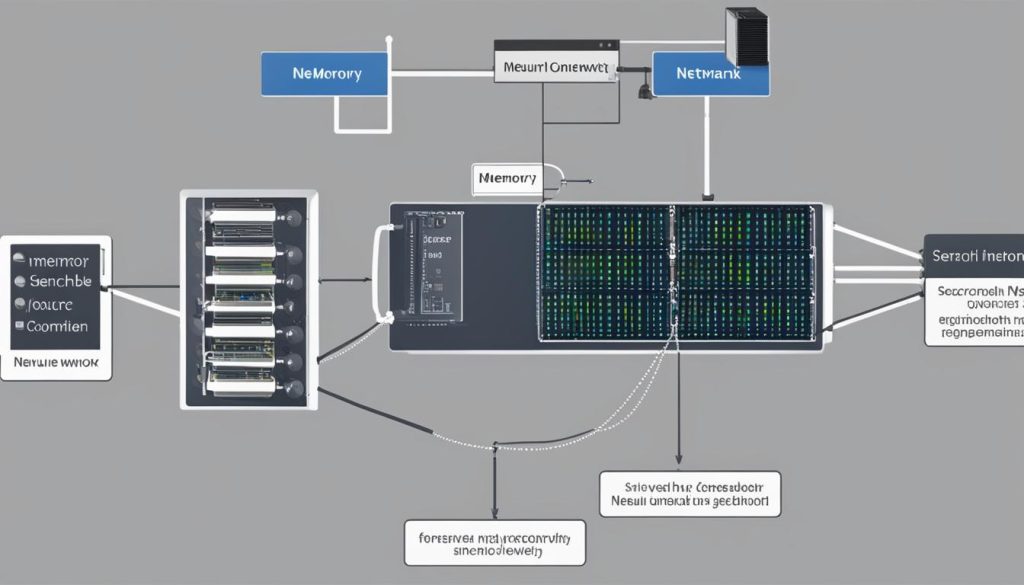
| Neural Turing Machines | External Memory | Controller | Memory Bank |
|---|---|---|---|
| Combines a neural network with external memory | Serves as a storage system for data | Processes input and interacts with memory | Allows reading and writing to specific locations |
| Enhances information processing capabilities | Facilitates data storage and retrieval | Manages the flow of information | Expands the system’s memory capacity |
| Enables knowledge generation and problem-solving | Optimizes performance through dynamic interaction |
Advantages of Neural Turing Machines in Education
Neural Turing Machines (NTMs) offer numerous advantages that can greatly benefit the field of education. By incorporating NTMs into the learning process, educators can empower students with enhanced knowledge generation and information processing capabilities. These advanced AI systems serve as powerful tools for students to leverage in various academic tasks, promoting creativity, critical thinking, and problem-solving skills.
NTMs provide students with the ability to generate code, write creatively, create art, and express themselves musically with the support of artificial intelligence. For instance, students can harness the power of NTMs for code generation, allowing them to apply AI algorithms to automate repetitive coding tasks while gaining a deeper understanding of programming concepts.
The integration of NTMs in educational practices revolutionizes the learning experience by expanding the scope of possibilities. Whether it’s writing an engaging essay or composing a musical masterpiece, NTMs facilitate knowledge exploration and experimentation. Students can access vast amounts of information and use NTMs to extract relevant insights, process complex data, and present their findings in a structured and meaningful manner.
“Integrating Neural Turing Machines into education unlocks new dimensions of learning, where students can harness the power of AI to push the boundaries of their creativity and critical thinking.”
The use of NTMs in education fosters interdisciplinary collaborations and encourages students to explore diverse subject areas. With the ability to process information and generate knowledge effectively, students can delve into complex topics, identify patterns, and make connections between seemingly unrelated concepts.
Advantages of Neural Turing Machines in Education:
- Enhanced knowledge generation capabilities
- Improved information processing skills
- Automation of code generation tasks
- Support for creative writing and artistic expression
- Facilitation of music composition
- Encouragement of critical thinking and problem-solving
- Expanded learning opportunities
Through the integration of NTMs in the educational landscape, students can develop a deeper understanding of various subjects while simultaneously honing their AI skills. This bridging of AI and education opens up a world of possibilities, paving the way for a future where knowledge generation and information processing are greatly enhanced, propelling students towards success.
| Advantages of Neural Turing Machines in Education |
|---|
| Enhanced knowledge generation capabilities |
| Improved information processing skills |
| Automation of code generation tasks |
| Support for creative writing and artistic expression |
| Facilitation of music composition |
| Encouragement of critical thinking and problem-solving |
| Expanded learning opportunities |
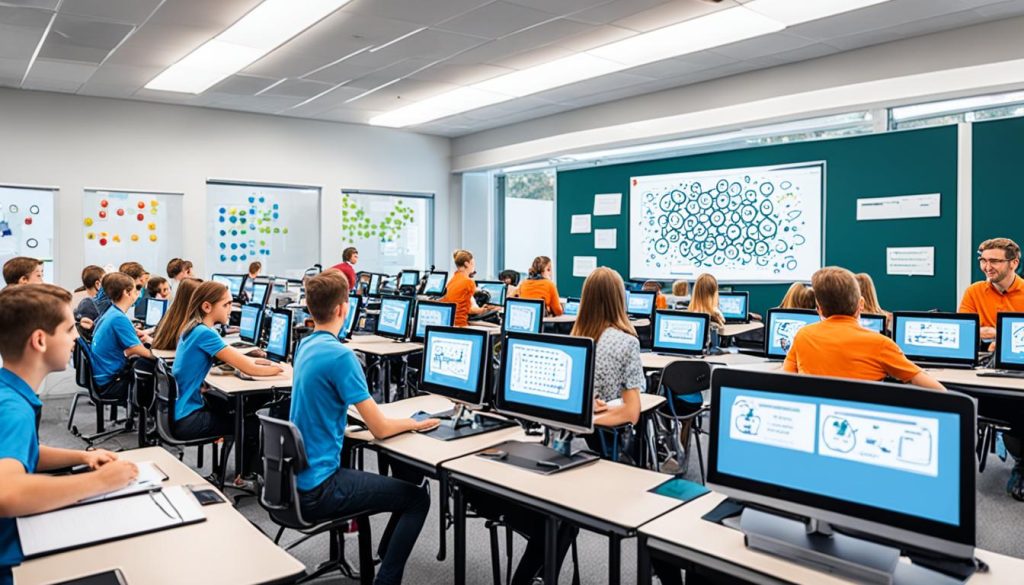
Evolution of Turing Machines in AI
Turing Machines have played a crucial role in the advancement of artificial intelligence. AI systems, with their ability to learn from data and adapt over time, resemble the processes of evolution and randomness found in nature. This evolution-driven approach has paved the way for the development of self-training architectures, revolutionizing the potential of AI in evolving business processes.
Inspired by the concepts of Turing Machines, self-training architectures enable AI systems to continuously learn and improve based on a continuous influx of information. Through this iterative process, AI systems can adapt to changing environments and optimize their performance over time.
Adapting to Changing Business Needs
Self-training architectures empower businesses to stay agile in rapidly evolving industries. By implementing AI systems that can dynamically learn from new data, companies can optimize their operations and respond effectively to changing market needs.
These architectures enable AI systems to analyze vast amounts of data, recognize patterns, and make intelligent predictions, allowing businesses to identify emerging trends and opportunities. By continuously evolving and updating their models, AI systems can enhance decision-making processes, optimize resource allocation, and devise innovative strategies to stay ahead of the competition.
Enhancing Efficiency and Accuracy
Self-training architectures also enhance the efficiency and accuracy of AI systems, leading to improved business outcomes. The ability to adapt and learn from new inputs enables AI systems to refine their algorithms, reducing errors and improving the accuracy of predictions and recommendations.
Moreover, self-training architectures empower AI systems to continually evolve their models based on feedback and real-world results. By incorporating feedback loops and adaptive learning techniques, AI systems can iteratively improve their performance, ultimately maximizing efficiency and delivering better results.
Unlocking New Possibilities
The evolution of Turing Machines in AI has opened up new possibilities across various domains. With self-training architectures, AI systems can tackle complex business challenges, such as demand forecasting, fraud detection, supply chain optimization, and customer segmentation.
By leveraging the power of self-training architectures, businesses can drive innovation, increase productivity, and achieve a competitive edge. These architectures enable AI systems to continuously learn, adapt, and optimize their performance, revolutionizing the way businesses operate in an ever-changing landscape.
Formal Systems in Neural Turing Machines
Neural Turing Machines (NTMs) rely on formal systems to seamlessly integrate memory into the AI learning process. This integration allows for enhanced knowledge generation, information processing, and problem-solving capabilities. One of the critical components in this process is the concept of working memory, which bears similarity to the human brain’s working memory system. Working memory enables NTMs to store and retrieve information quickly, contributing to their efficient computational frameworks.
The computational frameworks employed by NTMs are built on formal rules and logic, which have their roots in the Turing Machine model. These formal systems provide NTMs with the ability to perform precise and testable computations, ensuring accuracy and reliability in complex problem-solving tasks. By leveraging the principles of Turing Machine completeness, NTMs can simulate human-like memory processes and achieve remarkable AI capabilities.
The integration of formal systems in NTMs revolutionizes the field of artificial intelligence by bridging the gap between AI and human memory processing. NTMs enable AI systems to mimic the working mechanisms of the human brain, expanding their capabilities to process, store, and recall information. This integration opens up new possibilities in various domains, ranging from education to business processes, as it empowers AI systems to exhibit human-like memory characteristics.
Advantages of Formal Systems in Neural Turing Machines
1. Precise computations: Formal systems allow NTMs to perform calculations with high precision, enabling accurate problem-solving and decision-making processes.
2. Testability: The formal nature of NTMs facilitates the creation of testable computational frameworks, ensuring the reliability and integrity of AI systems.
3. Memory simulation: By leveraging formal systems, NTMs can effectively simulate human-like memory processes, enhancing their ability to learn and adapt.
4. Turing Machine completeness: The use of formal systems inspired by the Turing Machine model ensures that NTMs possess the computational power to solve complex problems.
“The integration of formal systems in Neural Turing Machines revolutionizes the field of artificial intelligence, enabling AI systems to exhibit human-like memory processing capabilities and enhancing their problem-solving potential.”
Figure: Visualization of the integration of formal systems in Neural Turing Machines, unlocking the potential of human-like memory processing.
Addressing Challenges in Neural Turing Machines
Neural Turing Machines (NTMs) have proven to be an innovative approach to AI, but they are not without their challenges. One of the primary difficulties faced by NTMs is generating weight vectors that effectively guide the reading and writing processes. These weight vectors are essential for determining the importance of different memory locations during memory access.
To overcome this challenge, attention mechanisms are employed in NTMs. Attention mechanisms combine two addressing methods: content-based addressing and location-based addressing. Content-based addressing allows the NTM to select values stored in memory that are similar to previously seen patterns, enhancing the accuracy of retrieval. On the other hand, location-based addressing ensures consistency in reading from specific memory locations, providing stability to the process.
By using these addressing mechanisms, NTMs can mitigate the limitations of fixed-size inputs and achieve greater flexibility in memory processing. The attention mechanisms enable the NTM to dynamically adapt its focus and prioritize different memory locations based on the specific task at hand, enhancing both efficiency and accuracy.
Attention mechanisms in Neural Turing Machines play a crucial role in facilitating adaptive memory access, allowing the model to effectively utilize its external memory and improve overall performance.
These addressing mechanisms have broader implications beyond NTMs, as they contribute to the advancement of AI research in various domains. By addressing the challenges related to memory access, NTMs are paving the way for more advanced and efficient AI systems that can dynamically utilize both external and internal memory in a contextually appropriate manner.
Memory Processing Flexibility and Adaptiveness
The combination of content-based addressing and location-based addressing in NTMs provides a high degree of flexibility in memory processing. Content-based addressing enables the retrieval of relevant information based on patterns and similarities with past experiences. This ability is particularly useful in tasks involving pattern recognition, classification, and information retrieval.
On the other hand, location-based addressing guarantees consistency and stability in memory access. By associating specific memories with fixed locations, NTMs can maintain context and prevent interference between different memory instances.
These addressing methods work together harmoniously, empowering NTMs with the capability to adapt their memory access strategies based on the specific requirements of the task. This adaptiveness enables NTMs to address the challenges posed by varying input sizes, memory capacity constraints, and the complexity of real-world problems.
The image above visually represents the attention mechanism employed in Neural Turing Machines, showcasing the dynamic weight vector generation that enhances the memory access process.
Conclusion
Neural Turing Machines (NTMs) are revolutionizing the field of artificial intelligence by bridging the gap between AI and human memory processing. With the integration of external memory, NTMs empower AI systems to generate knowledge, process information, and solve complex problems. The potential applications of NTMs span various domains, including education, business processes, and creative endeavors.
By incorporating NTMs into the learning process, educators can provide students with enhanced knowledge generation and information processing capabilities. NTMs also enable businesses to optimize their processes and adapt to evolving market dynamics. Moreover, NTMs open new avenues for creativity, artistic expression, and critical thinking.
As the field of AI advances, the integration of NTMs will play a vital role in unlocking the true potential of artificial intelligence. Through their seamless integration of external memory, NTMs revolutionize the capabilities of AI, paving the way for a future where machines can truly mimic the intricacies of human memory processing.
FAQ
What are Neural Turing Machines (NTMs) and how do they bridge the gap between AI and human memory processing?
Neural Turing Machines (NTMs) are AI systems that combine a neural network (controller) with an external memory bank. The memory bank allows the network to read from and write to specific memory locations, simulating human-like memory processing. This integration of external memory enhances AI’s capabilities in knowledge generation, information processing, and problem-solving.
What is the significance of understanding the human brain in developing AI technologies?
The human brain is essential in learning and cognition, with its distinct components and neural networks facilitating various functions such as sensory interpretation, cognitive skills, and emotional regulation. Understanding the intricacies of the human brain helps in developing AI technologies that mimic human-like memory processing.
How do Neural Turing Machines (NTMs) function in terms of their controller and memory bank?
NTMs combine a neural network as the controller with an external memory bank. The controller receives input from the outside world, processes it, and interacts with the memory bank based on its learned knowledge. The memory bank acts as a storage system, enabling information retrieval, knowledge generation, and problem-solving.
In what ways can Neural Turing Machines (NTMs) enhance education?
Incorporating NTMs into the learning process empowers students with enhanced knowledge generation and information processing capabilities. NTMs enable students to leverage AI for tasks such as code generation, writing, artistic creation, and musical expression, expanding learning opportunities and fostering creativity and critical thinking skills.
How have Turing Machines contributed to the advancement of artificial intelligence?
Turing Machines have inspired the development of AI systems that can evolve and improve over time, similar to the processes of evolution and randomness found in nature. Self-training architectures, influenced by Turing Machines, allow AI systems to constantly adapt and enhance their capabilities based on a continuous influx of information.
How do formal systems and working memory contribute to Neural Turing Machines (NTMs)?
NTMs leverage formal rules and logic, derived from the Turing Machine model, to create computational frameworks for AI systems. The concept of working memory, similar to the human brain’s working memory, enables quick storage and retrieval of information. This formalization allows for precise and testable computations, enhancing the capabilities of NTMs in solving complex problems and simulating human-like memory processes.
What are the challenges faced by Neural Turing Machines (NTMs) in generating weight vectors?
NTMs must generate weight vectors to guide the reading and writing processes. These weight vectors are determined through attention mechanisms, combining content-based addressing and location-based addressing. Content-based addressing selects values similar to previously seen patterns, while location-based addressing ensures consistency in reading from specific memory locations, providing flexibility in memory processing.
What are the implications of Neural Turing Machines (NTMs) in integrating AI and human memory processing?
NTMs revolutionize the capabilities of artificial intelligence by integrating external memory with AI systems. They enhance knowledge generation, information processing, and problem-solving across various domains such as education, business processes, and creative endeavors. The integration of NTMs plays a vital role in unlocking the true potential of artificial intelligence.

